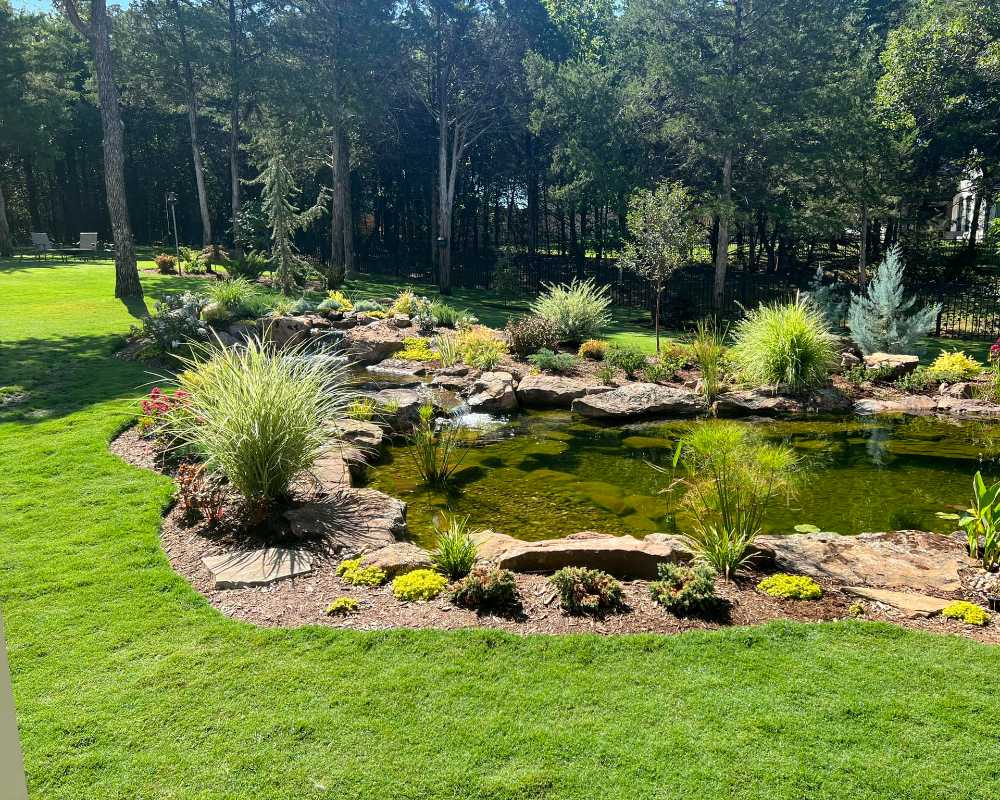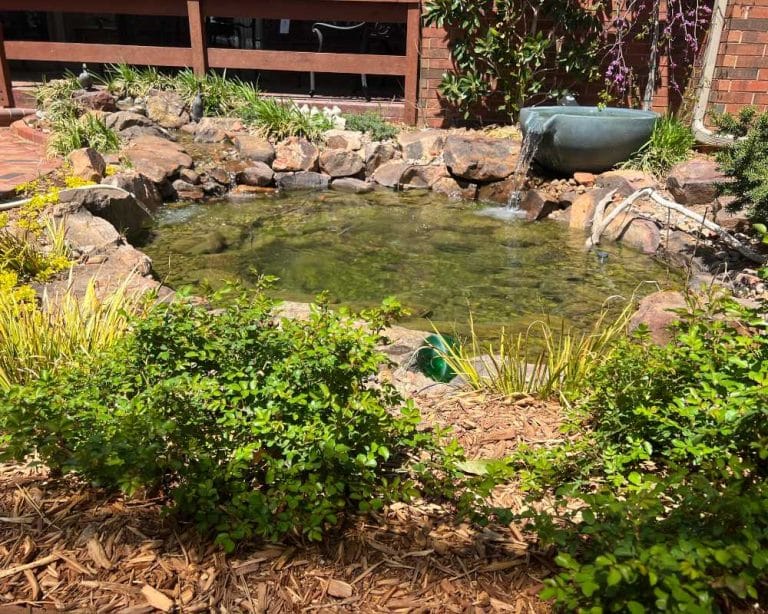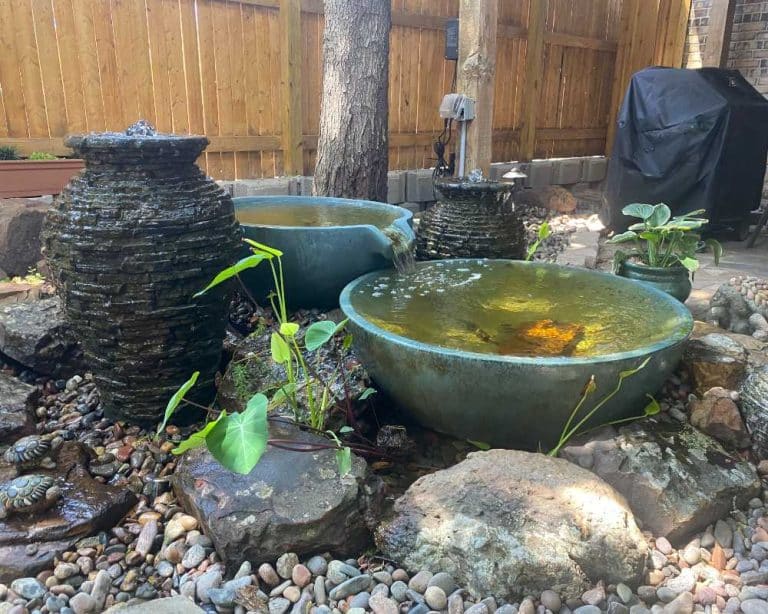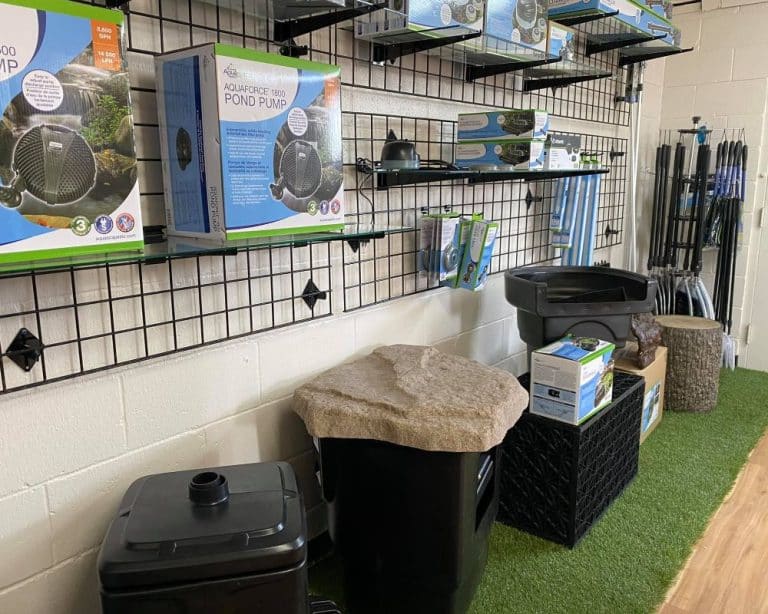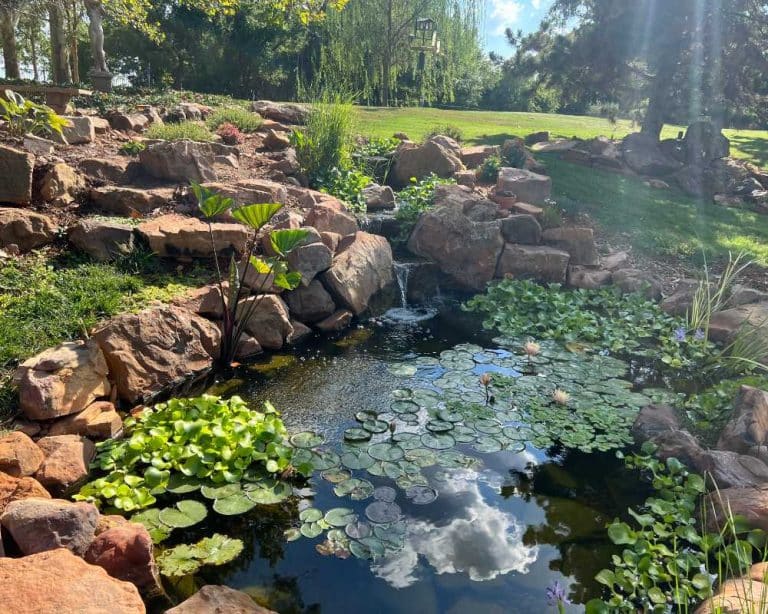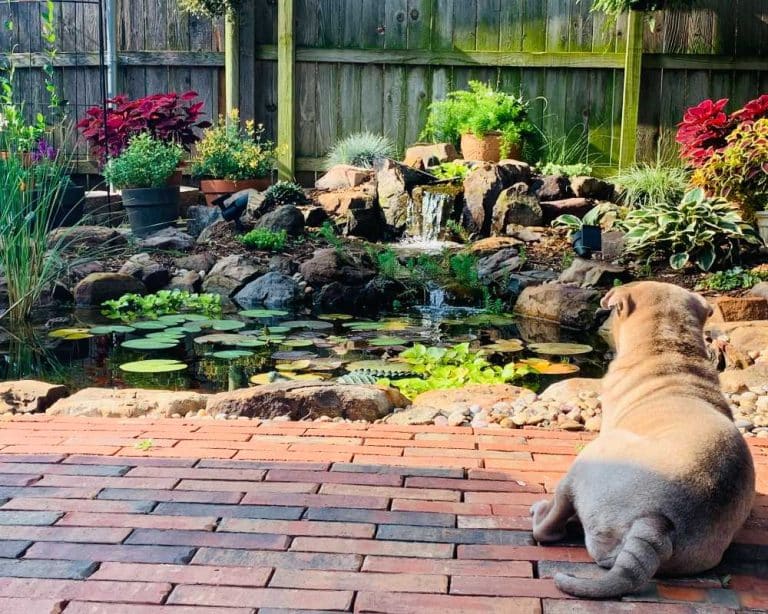How to Identify Pond Weeds
If you own a pond, by now you may have noticed that weeds will occasionally take root in or around it. However, you may also have noticed that many of these aquatic weeds do not resemble the weeds commonly found in your yard. Common yard weeds will occasionally take root around the perimeter of your pond, and are easy enough to spot and remove.
However, this page specifically targets aquatic weeds, which require some knowledge on your part to identify. With a little homework, you should be able to tell them apart from your other aquatic plants, and extract them.
Weeds are weeds, right? What’s the big deal?
I know what you’re thinking: “I think I can tell what a weed is. It’s any plant that I didn’t deliberately put in my pond, correct? Can’t I just go and yank ’em out?” Well, okay. However, knowledge is still power. The more you know about the species of aquatic plants you have growing in your pond the more power you have over the direction your pond takes.
There are many reasons why you might want to know how to identify weeds. Some are more invasive than others, and thus require more immediate attention. Some may have properties that can be beneficial to your pond or marine life. Others blend into your other plants so well that you won’t know they are there until you know what they look like and how to spot them. And others may have special qualities that require some care on your part in order to remove without complications. In other words, it’s time for you to learn your weeds.
What are the Four Main Types of Pond Weeds?
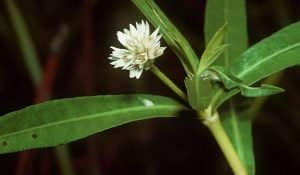
Emergent Plants
Emergent Plants are those with roots in the soil at the bottom of the water, yet with stems that rise above its surface. Some parts of these plants lurk below the surface, and other parts float on the surface. But all are rooted below. For example, water lilies float on the surface, but their stems reach to the bottom, where they are rooted.
- Alligator Weed
- Blue-hyssop
- Bog Moss
- Bulltongue Arrowhead
- Bulrush Species
- Bur-reed
- Cattail
- Large Flower Primrose Willow
- Pickerelweed
- Water Pennywort
- Wild Taro
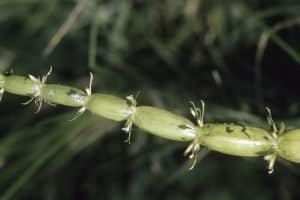 Floating Plants
Floating Plants
Floating Plants and Weeds are plants whose roots dangle below the surface and are not anchored to the floor below. In a relatively stable environment (such as a pond) the plant can simply drift around on the surface, living out its life cycle without major difficulty. Water Hyacinths, for example, are not rooted at the floor; they simply float around on the surface.
- American Featherfoil
- Azolla (Mosquito Fern)
- Bladderwort
- Common Salvinia
- Duckweed (Dotted Duckweed, Giant Duckweed)
- Giant Salvinia
- Floating Crystalwort
- Florida Mudmidget
- Rooted Water Hyacinth
- Watermeal
- Water Hyacinth
- Water Lettuce
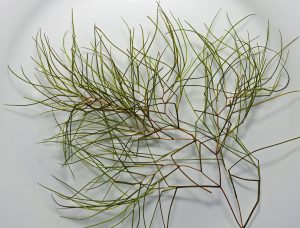 Submerged Plants
Submerged Plants
Submerged Plants are rooted at the floor of a body of water, with most or all of their mass below the surface. Often they have flaccid stems, which prevent them from rising above the surface. Hydrilla is an example of a submerged plant; it may resemble seaweed, but it is not algae. It has roots, a stem, and leaves, and they all work just fine underwater.
- American Pondweed
- Asian Marshweed
- Baby Pondweed
- Brittle Naiad/Marine Naiad
- Brittle Waternymph
- Bushy Pondweed
- Cabomba
- Coontail
- Curly-leaf Pondweed
- East Indian Hygrophila
- Eelgrass
- Egeria
- Elodea
- Eurasian Watermilfoil
- Hydrilla
- Illinois Pondweed
- Parrot’s-Feather
- Variable-Leaf Watermilfoil
- Waterthread Pondweed
- Widgeon Grass
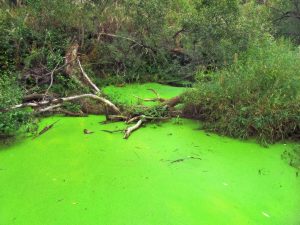 Algae
Algae
Algae are simple nonflowering aquatic plants that lack roots, stems, leaves or vascular tissue. Their species form a large, diverse group, including seaweed, and can even be monocellular. They have chlorophyll and use photosynthesis to make their own food, just like other plants. Critically, when conditions are right for them, they can multiply rapidly, resulting in large clusters, or “blooms”.
Algae come in many different varieties, but virtually all of them are considered invasive and a nuisance. Because none have a traditional plant structure (roots, stem, leaves) and most are microscopic, they should defy conventional means of identification. Look instead for bright green film growing on rocks or other pond features, or for clumps of viscid material floating in the water, or simply green murky water. At this point you are ready to remove it; you can learn more about the algae removal process from our algae removal page here.
Professional Koi Pond Installation in Oklahoma
Getting a professionally installed Koi pond in your home is only a short phone call away. At Oklahoma Ponds, we have over 30 years of koi pond installation expertise in the great state of Oklahoma. We are Oklahoma City’s fastest growing pond contractor, and that is not by accident. We strive to be the leader in all things garden ponds and water features. Every service we offer comes with a 100% satisfaction guarantee. Why choose us?
Specialized Company
We specialize in the care and construction of garden koi ponds. This allows us to stay up to date with the latest technology and advances in our industry
Dependable Services
Each of our technicians are thoroughly trained in the care and construction of garden ponds and water features. All of our services come with a 100% satisfaction guarantee!
Reputable Company
Every service comes with our 100% satisfaction guarantee. Our company’s reputation is impeccable, just take a look at our Google Reviews.

